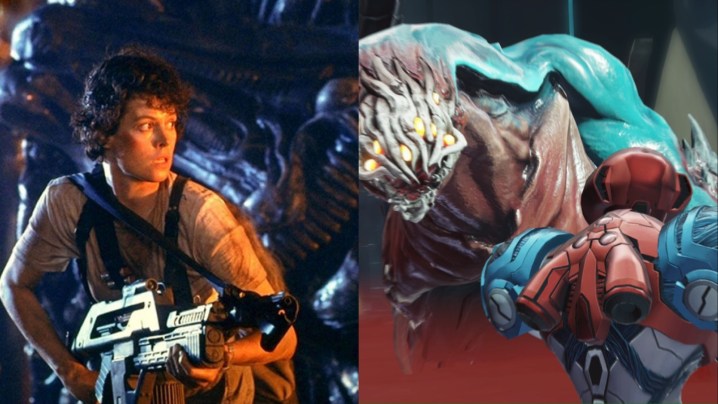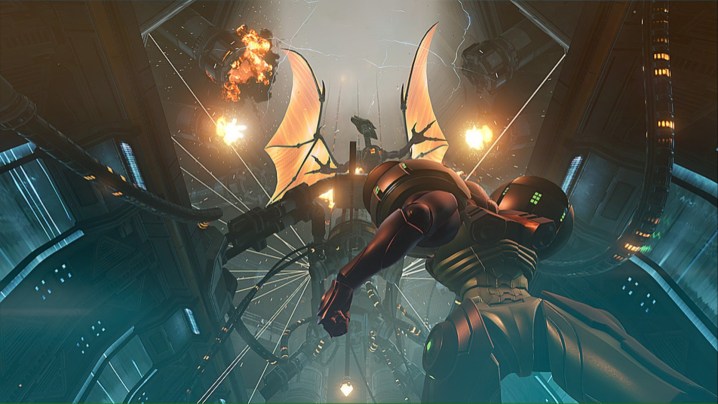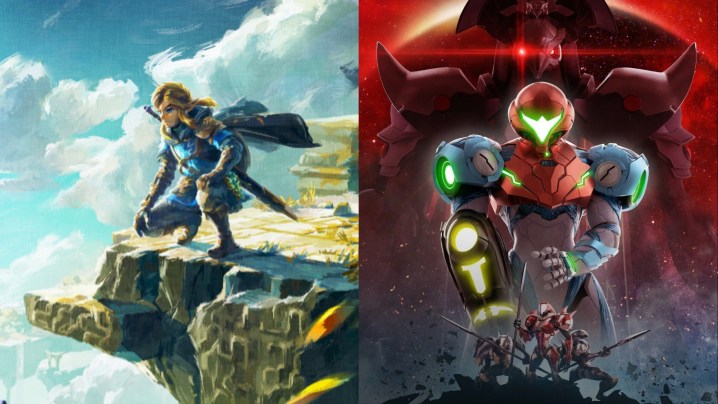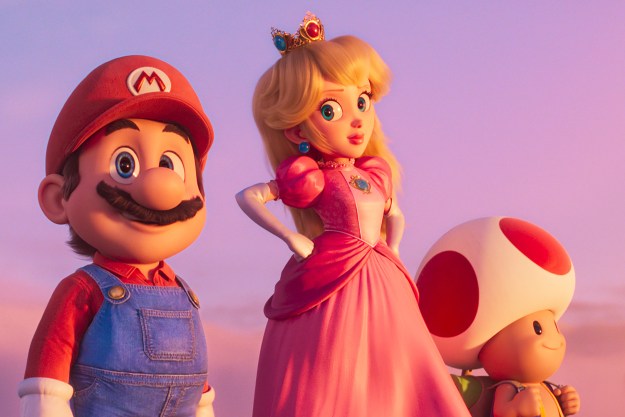Across film and TV, video game adaptations are becoming increasingly prominent, and the commercial success of The Super Mario Bros. Movie should pave the way for Metroid‘s time in the sun. Though The Super Mario Bros. Movie is a bit of a superficial adventure, the movie’s colorful visuals and reminiscent fun of the source material are more than enough to draw massive crowds.
That box office success should also be a testament to the viability of gaming adaptations in general, and the recent resurgence of Metroid should ride its tailwinds. The latter’s recent critical and commercial acclaim from Dread and Prime Remastered for the Switch combined with the storytelling potential of the TV medium could take the Nintendo brand in bold new directions.
Getting the Nintendo brand’s foot in the door

Nintendo is undoubtedly one of the biggest names synonymous with video games, but big- and small-screen adaptations are relatively uncharted territories. While some are trying to forget the ’90s Super Mario Bros. movie if they haven’t already, this titanic blockbuster hit can be considered Nintendo’s first true attempt at expanding the brand beyond gaming.
Mario is easily one of the biggest tentpole titles and franchise mascots for the video game publisher and console manufacturers, but the likes of Metroid could indirectly see new life under the Nintendo Pictures label. With the brand having its foot in the door in the TV and film spaces, it would be worth workshopping how the context of games like Metroid Prime or Dread could work more cinematically.
Admittedly, the sci-fi series’ most prominent eras before the latest two releases were the ’90s and ’00s. But with Metroid Prime 4 still on the horizon, an animated TV show could be an excellent way to diversify the newly-christened Nintendo Pictures production studio early on.
An ‘Alien-lite’ experience

Playing through any of the games in the series, it’s easy to see that a core inspiration for the Metroid games is Ridley Scott’s groundbreaking sci-fi horror film Alien. From longtime classics like Super Metroid on the SNES onward, these titles brilliantly captured the ominous claustrophobia of being stranded in alien territory — both literally and figuratively.
Of course, no one should expect the outright horror-movie gore of the franchise. Nonetheless, the animation and art style of the 3D games, in particular, are solid blueprints for how a TV series could look and feel. It has all the necessary ingredients for a “lite” variation of what made Scott’s Alien and James Cameron’s Aliens work so well in terms of atmosphere.
Between the titular parasites, various other alien species, and diverse sci-fi settings, a Metroid show has plenty of room to use those classic influences while staying true to what makes the video games special.
Experimenting with the TV format

Aside from the fact that Metroid is a far more niche property that’d likely be less of a risk in the medium, the TV format is also more creatively suited to its episodic narrative.
The protagonist Samus Aran is an intergalactic bounty hunter taking on various missions from the Galactic Federation while hunting the Space Pirates that killed her parents. On that basis, TV would be a fantastic way to adopt an episodic/anthological storytelling structure akin to The Mandalorian.
Weaving one-off space-faring stories in between the core plot tackling Samus’ conflict with the iconic villain Ridley is something that would benefit from a serialized format. Especially so since Metroid stories tend to be more minimalist than a Hollywood blockbuster movie would debatably be able to handle.
That’s where animator Genndy Tartatovsky’s animated shows could be another point of reference, namely for his work on the cult-classic Samurai Jack. The series was visually striking, narratively unique, and was famous for its unconventional storytelling methods as episodes could run for extended sequences with little-to-no dialogue.
Ridley could even be used as an antagonistic force like Samurai Jack‘s Aku, with the draconic alien more often than not being just out of Samus’ grasp whenever episodes shift away from one-off bounties and back to the overarching story.
Aesthetically, Tartatovsky’s animation style could certainly adapt to Metroid‘s tone, given the grittier feel of Samurai Jack, Star Wars: Clone Wars, and Primal. Metroid wouldn’t be limited to just this, though, as contemporary animated successes like Netflix’s Castlevania could mesh with the Nintendo series just as well.
Both animation and TV are extremely versatile, arguably more so than what a live-action adaptation could provide, meaning there are several avenues a Metroid animation could take.
Opening the door for more ambitious Nintendo adaptations

As exciting as the idea of a narratively unconventional and eerily atmospheric series like Metroid making the jump to TV would be to longtime fans, it’s probably not the next IP Nintendo Pictures will jump on. But regardless of when an adaption might come, it could pave the way for bolder Nintendo series being brought to movies and TV.
The Super Mario Bros. Movie unquestionably struck the right chords for most audiences by not pretending to be anything more than what it is. That’s fine and even admirable in its own right since movies can also fall into the trap of taking themselves too seriously, but it’s far from being an ambitious movie.
Metroid would be an interesting way to buck some generic Hollywood trends and give a reason for more Nintendo icons, like The Legend of Zelda, to have a chance to be adapted elsewhere. The argument could even be made that Zelda is most likely next, and it’s hard to imagine veteran fans not being elated over a Studio Ghibli-like anime production.
There will always be a place for breezy family-friendly game adaptations like Mario and Sonic. But considering everything from these mascot comedies to grim post-apocalyptic dramas like HBO’s revolutionary The Last of Us is earning praise for different reasons, there’s no reason why something like Metroid can’t find a new audience to resonate with.
Nintendo, Illumination, and Universal Studios’ The Super Mario Bros. Movie is now playing in theaters.
Editors' Recommendations
- Are movie franchises dead, or are we just seeing the start of new ones?
- Video game adaptations are huge, but will we ever see a great one?
- I loved The Super Mario Bros. Movie. Here are 5 more movies you should watch
- The 7 most powerful characters in The Super Mario Bros. Movie, ranked
- All the Easter eggs in The Super Mario Bros. Movie




